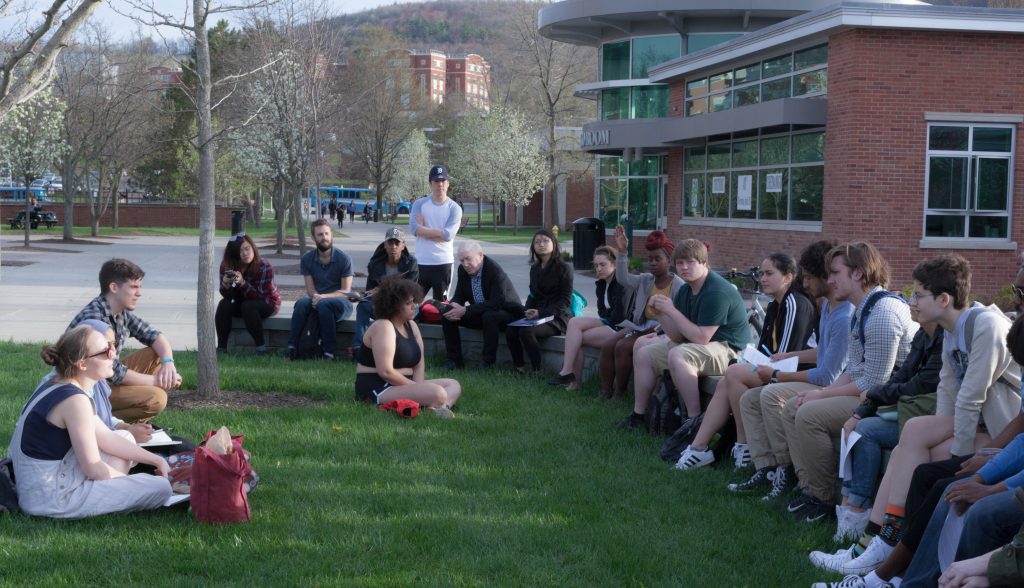
Binghamton University’s planned expansion of the blue-light system to the West Side has created controversy on and off campus as students and community members debate whether the system is discriminatory or effective and necessary. On Monday night, this discussion continued as over 40 students gathered in front of Science I to discuss the practicality of the blue-light call box and camera system.
Utilized on college campuses nationwide, the system at BU connects users directly to Binghamton’s New York State University Police through phones attached to the highly visible light posts. Members of the Frances Beal Society — a coalition of students who want to see progressive change both on campus and in the greater Binghamton community — and others who joined in on the discussion were quick to point out a host of issues with the proposed West Side blue-light system.
Detractors of the system claim that it is not only inefficient in ensuring safety, but also a large waste of funds. Mary Lister, a member of the Frances Beal Society and a senior majoring in sociology, stated that the University’s plan to spend $200,000 a year for five years on the installation and maintenance of the blue-light system on the West Side of Binghamton is unnecessary considering that crime rates have fallen over the past 20 years.
“The proposed blue lights and cameras are not effective, and as stated by Binghamton’s deputy mayor, crime is ‘at an all-time low’ regardless,” Lister wrote in an email. “There is no research supporting the efficacy of blue lights. Several universities have found them ineffective and are in the process of getting rid of their blue-light systems. Why would the University invest $200,000 in an ineffective and unused telephone pole?”
Participants also raised concerns that the system seems like a hollow promise of security to promote the appearance of a more secure environment.
“Safety isn’t a concern for students in terms of them being attacked randomly on the streets,” said Farihah Akhtar, a member of the Frances Beal Society and a junior double-majoring in sociology and political science. “In essence, I see it as part of this hysteria surrounding student safety and that the University is just using it as a public relations campaign to sort of be able to say that [it] cares about [its] student safety, putting money and investing in these blue lights, but really there is no problem with student safety, and this money could be going elsewhere.”
Members of the Frances Beal Society said the money committed to the blue-light system should be reallocated to fund initiatives such as phone apps or a safe-ride program. Alternatively, they advocated to allocate the funds to the University Counseling Center, so that it could return to a long-term care model.
The Frances Beal Society and others who wish to participate plan on marching to the Couper Administration Building Thursday, April 27, to demand that the University immediately withdraw its financial support of the blue-light program and reallocate the funding into other initiatives.
Rachelle Jereza, a second-year graduate student studying sociology who attended the event, stated that she spoke with the Roosevelt Institute, the Binghamton Police Department and Binghamton Deputy Mayor Jared Kraham for information relating to the blue-light system, but none of these sources were able to supply her with reliable data on the rates of crime perpetrated against students. As a result, she said she has little faith in the blue-light system and sees it as a marketing campaign for the University.
“We don’t even know if the blue-light call boxes are being used on campus,” Jereza said. “None of the people I’ve met with were able to give me any numbers on whether or not they are actually used, and they’re becoming increasingly obsolete on other campuses. Many campuses have begun taking them down and have switched over to using apps. If we’re really serious about safety, we should tackle issues that actually exist within the University.”


